This article was co-authored by Aimee Eyvazzadeh, MD, MA. Aimee Eyvazzadeh is a Fertility Specialist and the Founder of The Egg Whisperer Show, a fertility care program focusing on fertility education based in the San Francisco Bay Area. Her work has been featured in magazines such as People, Forbes, and Marie Claire, and she has been featured on the Today Show, Good Morning America, and CNN. She earned an MD from the University of California, Los Angeles in 2001, completed an OB/GYN residency at Harvard Medical School in 2005, and finished a fellowship in Reproductive Endocrinology and Infertility at University of Michigan, where she also completed an MPH.
There are 15 references cited in this article, which can be found at the bottom of the page.
wikiHow marks an article as reader-approved once it receives enough positive feedback. In this case, several readers have written to tell us that this article was helpful to them, earning it our reader-approved status.
This article has been viewed 3,912,063 times.
Many people look for ways to raise the odds of having a boy. There's no guarantee that you can choose the gender of your baby, but there are lots of options to give you the best shot. You can use at home methods, like maximizing the sperm count and dietary changes. You can also consider medical procedures, such as sperm separating or IVF. You may try multiple options, depending on what feels right for you.
Steps
Using At Home Methods
-
1Have sex in a rear entry position. Some experts advise using sexual positions that encourage deep penetration, such as a rear-entry position, when trying to conceive a boy. The logic behind this is that ejaculating during deep-penetration sex places the sperm as close as possible to the cervix, giving the possibly faster-moving male sperm an advantage.
- With shallow penetration, sperm may be deposited farther from the cervix, which means that the more durable female sperm (which may survive longer in the vagina) may have the advantage.[1]
-
2Try for a female orgasm. Male sperm, which are more fragile than female sperm, tend to die faster in the acidic environment inside the vagina. Giving the female partner an orgasm can improve the chances of the male sperm because during female orgasm, extra cervical fluid is released. This makes the environment more hospitable to male sperm, increasing the chances that they make it to the egg alive.
- There are also claims that the orgasmic contractions can help push the sperm into the cervix faster. Just remember, these aren’t proven by science.
Advertisement -
3Consider having a baby before your reach 30 or 35. Some research suggests that the older the parents are, the higher the chances are of having a girl. Therefore, if you're trying for a boy, it might be best to start early. The chances are highest for a woman to conceive a boy before age 30. It's age 35 for men.[2]
Trying a Sperm Separating Procedure
-
1Think about visiting an Ericsson-licensed clinic. The Ericsson Albumin method is a technique used to separate male sperm from female sperm. Just keep in mind that many doctors and researchers question its effectiveness.[3] The method remains attractive to some because of its relative cheapness (at $600-$1200 per attempt) compared to other techniques.
- Search the internet or ask your doctor to find a clinic near you. You can then schedule an appointment for the next date of ovulation.
-
2Visit the clinic to give a sperm sample and process the sperm. Upon arriving at the clinic on the day of the female partner's ovulation, the male partner gives a sperm sample. Generally, a man's sperm count is highest after 2-5 days without ejaculation, so you may be asked by the clinic to abstain from any sexual activity for about 48 hours before your appointment. [4]
- Once he provides his sperm sample, the sperm is placed in a vial of a type of protein called albumin. Sperm can swim through albumin, but the Ericsson method assumes that male sperm, which are smaller, weaker, and faster than female sperm, can pass through the albumin quicker.
- This means that, after waiting for the sperm to swim from the top of the vial to the bottom of the vial, the sperm near the bottom will (supposedly) be mostly male, while the sperm near the top will be mostly female.
-
3Undergo artificial insemination. To try for a male child, staff at the clinic will take a sample of sperm from the bottom of the vial of albumin and artificially inseminate the mother with this sperm. At this, point, hopefully, the female partner conceives. As with sexual intercourse, however, pregnancy is not guaranteed from a single exposure to sperm.
- There are several different methods of artificial insemination in use, but the most common is Intra Uterine Insemination (IUI). In this method, sperm are injected via a catheter directly into the uterus.
Undergoing IVF
-
1Find a hospital or clinic that performs PGD and IVF. Preimplantation Genetic Diagnosis (PGD) is a medical process by which an embryo's genetic information is analyzed before implantation in the uterus. It can also be used to determine the sex of the baby. If you're interested in pursuing this process, start by contacting a clinic near you that performs this type of procedure.[5]
- PGD coupled with In-Vitro Fertilization (IVF) is one of the only ways to choose a baby's sex with absolute certainty. However, it's also one of the most expensive, resource-intensive methods available.
-
2Undergo fertility treatments. If the clinic agrees to perform this procedure, the female partner will probably need to begin preparing to donate eggs several weeks to a month in advance. Generally, women undergoing PGD and IVF are given fertility drugs to stimulate the ovaries to release more mature eggs.
- Usually, fertility drugs are taken for about two weeks via pill or injection.[6]
- Side effects for common fertility drugs are usually mild and can include include hot flashes, nausea, bloating, headache, and blurred vision.
-
3Receive hormone injections. In addition to taking fertility drugs, women who intend to donate eggs usually also receive a series of daily hormone injections. These injections further stimulate the ovaries to release more mature eggs. [7] Some women have strong side effects to these hormones, so first-timers are generally monitored carefully to ensure that the process is proceeding smoothly.
- You may also be required to take progesterone, a hormone that thickens the uterine lining in preparation for IVF.
-
4Donate eggs. As the female partner's body is stimulated to release more eggs, regular ultrasound tests are used to determine when the eggs are ready to be donated. When the eggs are fully mature, there is a simple, minimally-invasive surgical procedure to remove the eggs. Most women are able to resume normal activities within a day or so of this procedure.
- Though the female partner is put under sedation for this procedure, it can be somewhat uncomfortable. Painkillers are usually prescribed to aid with post-surgery pain.
-
5Allow the eggs to be fertilized. If the male partner does not already have a stored sperm sample ready to use, he must now provide it. The male partner’s sperm is processed to isolate the healthiest, highest-quality sperm, and combined with the eggs. Within about a day, the eggs are checked to see whether or not they have been fertilized.[8]
- As with all sperm donations, in this case, the male partner will want to abstain from ejaculating for about 48 hours before giving his sperm donation.
-
6Allow the embryo to undergo biopsy. After the embryos have grown for several days, a doctor removes several cells from each for testing and analysis. DNA is removed from each cell sample and copied via a process called the Polymerase Chain Reaction (PCR). This DNA is then analyzed to determine the embryo's genetic profile, including the sex of the child that could potentially grow from the embryo.[9]
-
7Make a decision based on the testing results. After the cells from each embryo have been analyzed, you are notified which embryos are male and which are female, in addition to any other pressing information (such as the presence of genetic diseases).
-
8Undergo In-Vitro Fertilization. When you've chosen which embryo(s) you'd like to attempt pregnancy with, the embryos are transferred into the uterus via a thin tube passing through the cervix. Usually, only one or two embryos are transferred at a time. During a successful attempt, one or more embryos attach to the uterine wall and pregnancy continues as normal. [10] In two weeks, you may take a pregnancy test to see whether or not the procedure was a success.
- Don't be deterred by one unsuccessful IVF attempt. Generally, most women have a per-cycle success rate of about 20-25%. Success rates of 40% or higher are considered quite rare. It's often necessary for perfectly healthy couples to have to undergo multiple rounds of PGD and IVF to achieve their desired pregnancy.
- If you've failed a cycle, ask your doctor why they think the transfer didn't work, what they would want to change next time, and if there's anything you can do to increase your chances of success.[11]
Using Unproven Methods
-
1Maximize the sperm count to increase the number of male sperm. Male sperm are thought to be weaker but faster than female sperm. It's thought that if you increase the overall number of sperm, you can raise the odds that a male sperm will reach the egg first. Keep in mind that newer studies have shown this not to be true. But it won't hurt to try to:
- Sperm production is at its highest when the testes are slightly cooler than body temperature. The male partner should avoid hot tubs or warm laptops.[12]
- Don't smoke or drink. Men who smoke and drink heavily are more likely to have low sperm count. If you're having a hard time quitting, talk to your doctor.
- Don't take illegal drugs, as they can slow sperm production.[13]
- Avoid certain medications. A variety of medications can affect a man's fertility. Talk to your doctor if you have concerns.
-
2Have sex as close to the ovulation date as possible. In general, aim to have sex in the narrow window starting 24 hours before ovulation and ending 12 hours after ovulation. During this time, conceiving a boy is more likely, because male sperm are thought to be faster. Researchers have shown that this is likely not true, but it's okay to try this method.[14]
- Avoid sex in the days leading up to ovulation. It is thought that this will help make the male sperm more concentrated.
- To find your ovulation date, calculate the day that is about 2 weeks before your next expected period. You can also purchase an ovulation kit at the drug store.
-
3Add more calcium and magnesium to your diet. Some people claim to have gotten pregnant with a boy by changing their diet. To try this, eat foods with lots of calcium. Try milk, yogurt, and leafy greens like kale. You can add more magnesium by eating foods like almonds, bananas, and tofu.[15]
- Consult your doctor before making major changes to your diet.
-
4Reduce the amount of sodium and potassium you consume. While its not backed by science, you might raise the odds of having a boy by making other dietary changes. Cut back on sodium by limiting foods like french fries, pretzels, and jarred pasta sauces.[16]
- You can cut back on potassium by limiting navy beans, cantaloupe, and beets.
- Remember that dietary changes are not proven to increase your chance of having a boy.
-
5Consider taking cough syrup before sex. It is possible that the ingredients in common cough syrups can thin the cervical lining, which would make it easier for the weaker male sperm to get through. Try following the dosage directions and taking some cough syrup shortly before sex.[17]
- Make sure not to take for more days than recommended on the label without consulting your doctor.
-
6Use frankincense to create a hospitable environment for male sperm. This herb has long been used in Chinese medicine as a tonic for the ovaries and uterus. Frankincense may help your body absorb more nutrients. This could make it a more hospitable environment for the less-sturdy male sperm.
- Visit a health store and ask an herbalist how best to use frankincense.
- Make sure to ask your doctor before trying new essential oils.
Warnings
- No gender selection methods are 100 percent reliable. Most gender selection techniques are anecdotal and have not been proven by medical professionals.⧼thumbs_response⧽
References
- ↑ https://www.babycentre.co.uk/sex-for-getting-pregnant
- ↑ https://academic.oup.com/humrep/article/27/1/283/713562?login=false
- ↑ https://embryo.asu.edu/pages/ericsson-method-sperm-separation
- ↑ https://www.who.int/docs/default-source/reproductive-health/srhr-documents/infertility/examination-and-processing-of-human-semen-5ed-eng.pdf
- ↑ https://www.ucsfhealth.org/treatments/pre-implantation-genetic-diagnosis
- ↑ https://www.plannedparenthood.org/learn/pregnancy/fertility-treatments/what-ivf
- ↑ https://www.nhs.uk/conditions/ivf/what-happens/
- ↑ https://www.nhs.uk/conditions/ivf/what-happens/
- ↑ https://www.ivf.com.au/treatments/preimplantation-genetic-testing-pgt/pre-implantation-genetic-testing
- ↑ https://www.pennmedicine.org/updates/blogs/fertility-blog/2020/april/how-does-the-ivf-process-work
- ↑ Aimee Eyvazzadeh, MD, MA. OB/GYN & Fertility Specialist. Expert Interview. 24 March 2020.
- ↑ ucsf.edu/news/2007/03/97970/hot-tubs-hurt-fertility-ucsf-study-shows
- ↑ https://www.mcgill.ca/oss/article/health/facts-and-myths-male-fertility-tight-underwear-hot-tubs-marijuana-and-more
- ↑ https://www.bbc.com/news/health-46597323
- ↑ http://healthland.time.com/2010/09/07/want-a-girl-eat-dairy-shun-salt-and-have-sex-sometimes/
- ↑ http://healthland.time.com/2010/09/07/want-a-girl-eat-dairy-shun-salt-and-have-sex-sometimes/
- ↑ https://citeseerx.ist.psu.edu/viewdoc/download?doi=10.1.1.349.7279&rep=rep1&type=pdf
About This Article
While there’s no definite way to choose the gender of your baby, there are a few at-home methods you can try to raise your chances of having a boy. Some experts advise that deep penetration positions work better to conceive a boy since sperm will be deposited closer to the cervix, so consider trying a rear-entry position. You should also try for a female orgasm during sex since this increases the chance of male sperm making it to the egg. Having a baby before 30 might also increase your chances of having a boy, since older parents have higher chances of conceiving a girl. If you want to choose the gender of your baby, you could also get In-vitro fertilization treatments. During this process, an embryo is analyzed, then selected for implantation based on its genetic information. Just keep in mind that this process is often costly and time-consuming. To learn how to get a sperm separating procedure, read on!




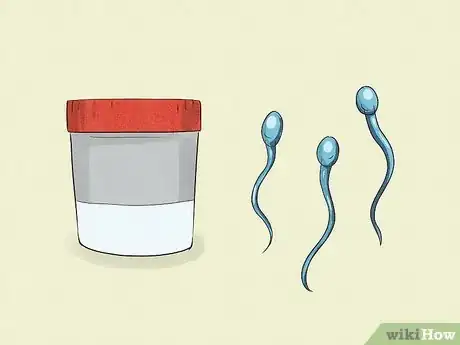
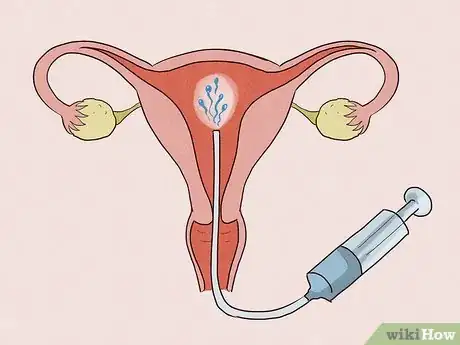



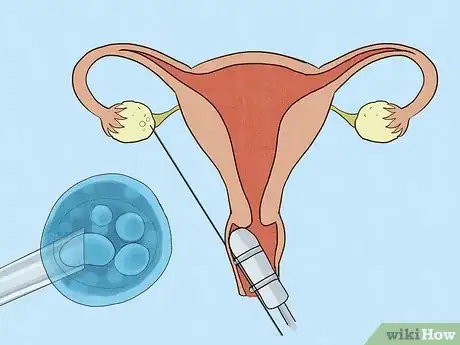

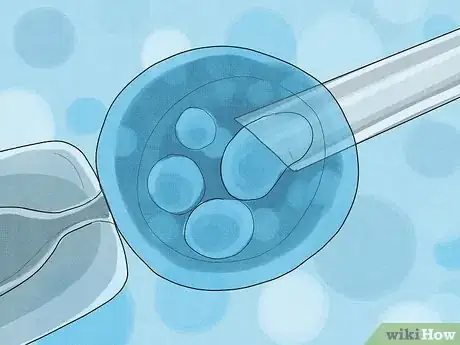











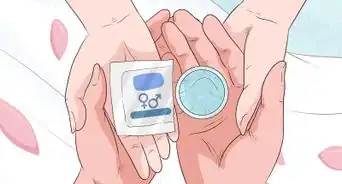




























































Medical Disclaimer
The content of this article is not intended to be a substitute for professional medical advice, examination, diagnosis, or treatment. You should always contact your doctor or other qualified healthcare professional before starting, changing, or stopping any kind of health treatment.
Read More...